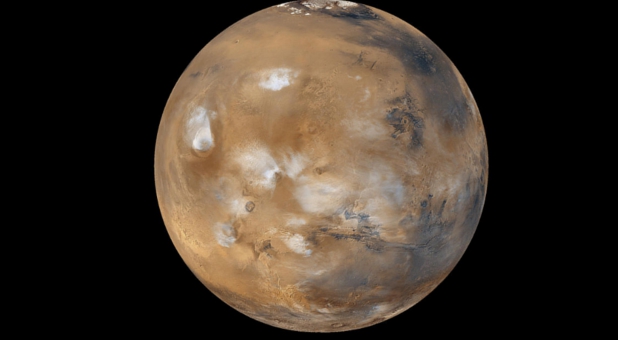NASA’s Mars rover Curiosity has found carbon-containing compounds in samples drilled out of an ancient rock, the first definitive detection of organics on the surface of Earth’s neighbor planet, scientists said on Tuesday.
The rover also found spurts of methane gas in the atmosphere, a chemical that on Earth is strongly tied to life. Additional studies, which may be beyond the rover’s capabilities, are needed to determine if the organic compounds and/or the methane gas were produced by past or present life on Mars or if they stem from geochemical processes.
“We have had a major discovery. We have found organics on Mars,” Curiosity lead scientist John Grotzinger, with the California Institute of Technology in Pasadena, California, said during a webcast press conference at a science meeting in San Francisco.
“The probability of any of these things being sources (from life) … we just have to respect that it is a possibility,” he added.
Curiosity picked up hints of organics in its earliest chemical analysis of rocks in Gale Crater, a 96-mile (154-km) wide impact basin where the rover made a sky-crane landing in August 2012.
Last week, scientists published research showing the crater was once filled with water, with sediments building up over time to form three-mile (5-km) high Mount Sharp, which rises from the basin’s floor.
Shortly after Curiosity landed, it found that the planet most like Earth in the solar system had the right chemical ingredients and environmental conditions to support microbial life, fulfilling the primary goal of the mission.
The methane detections were a big surprise, said Curiosity co-investigator Chris Webster, with NASA Jet Propulsion Laboratory in Pasadena, Calif.
A year ago, scientists reported that after eight months of searching, Curiosity had found no detectable methane in the atmosphere around Gale Crater.
The rover continued to take air samples and in November 2013 it hit pay dirt with a methane spike 10 times higher than background levels. The methane patch remained around the rover for the next 60 days and then vanished.
Curiosity scientist Sushil Atreya, with the University of Michigan, Ann Arbor, told reporters his team suspects the methane was produced somewhere around the rover and then dissipated in the wind.
The methane detections by Curiosity follow a series of observations by Earth-based telescopes and Mars-orbiting spacecraft that found mysterious but fleeting plumes of methane.
“We’re really not in a position from these data to say one way or the other what the origin of the methane is,” Atreya said.
“Because we are seeing signals here it’s worth coming back and doing more work,” Grotzinger added.
The research was released at the American Geophysical Union conference. The methane study will be published in this week’s issue of the journal Science. (Reporting by Irene Klotz in Cape Canaveral, Florida; Editing by Steve Orlofsky)
See an error in this article?
To contact us or to submit an article





















